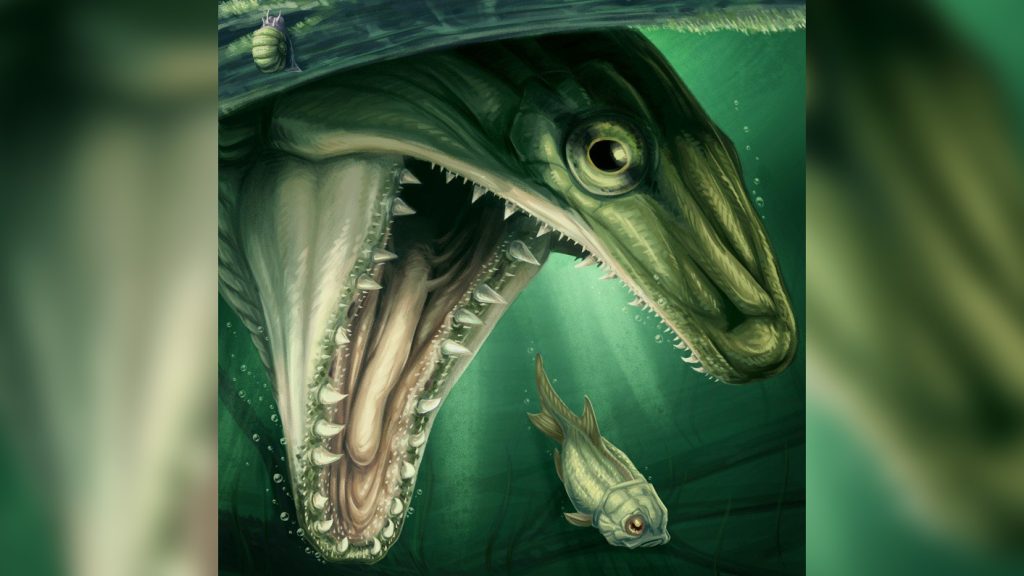Researchers have recently uncovered a new species of ancient fish, named Sphyragnathus tyche, distinguished by its hooked front fangs, which positioned it as a formidable predator in its habitat. A study published in the Journal of Vertebrate Paleontology highlights the unique features of this creature, particularly its long, curved jaw. This adaptation is thought to illustrate a crucial evolutionary shift that occurred around 350 million years ago, as fish began to develop smaller front teeth that resembled fishing hooks.
This ancient fish measured almost a meter long and had back fangs that were about one centimeter, which were likely utilized to chew its captured prey prior to digestion. The species thrived in what is believed to have been a vast inland lake in Nova Scotia, an area that provided ample opportunity for hunting.
Conrad Wilson, the lead author and a doctoral candidate in paleontology at Carleton University, emphasized the notable attributes of Sphyragnathus tyche. “I would say it’s a fairly fearsome looking fish. If its mouth is open, you would see those fangs in the jaw,” stated Wilson in a Friday interview. The significance of this fossil extends beyond its predatory prowess; it offers critical insights into the evolutionary history of ray-finned fish, a diverse vertebrate group that occupies a variety of aquatic and semi-aquatic environments across the globe.
Ray-finned fish represent one of the last major vertebrate groups to be thoroughly documented, and researchers contend that there remain substantial gaps in our understanding of their early evolution. Wilson pointed out the importance of this fossil in revealing aspects of fish life shortly after a major extinction event—the transition from the Devonian to the Carboniferous periods. “The fossils are telling us about what the fish existing right after a mass extinction looked like,” Wilson remarked.
There has been significant curiosity among paleontologists regarding how ray-finned fish adapted and flourished following extinction periods, especially while other groups, such as the heavily armored placoderms, were failing. According to Wilson, the location where the fossil was discovered—a beach at Blue Beach on the Minas Basin, located approximately 90 kilometers north of Halifax—was previously thought to be part of a sprawling freshwater lake that existed near the ocean.
The researchers credited Sonja Wood, the former director of the Blue Beach Fossil Museum, with the discovery of the fossilized jaw. Wood, who passed away last year, had encouraged her colleague Chris Mansky to explore along a nearby creek that flowed into the beach. Inspired by a strong intuition about the potential for finding fossils, she urged Mansky to investigate the area. Wilson recounted that Mansky found the jaw fossil right before a storm hit that night, allowing for its recovery.
Looking to the future, Wilson mentioned the potential for further discoveries as ongoing examinations of the Blue Beach fossils continue. “We have lots of different anatomies that simply haven’t been described yet,” he indicated, mentioning that a follow-up paper is in the works. This ongoing research signifies that the understanding of ancient fish and their evolutionary adaptations is still unfolding, keeping the door open for more fossilized findings in the years to come.












